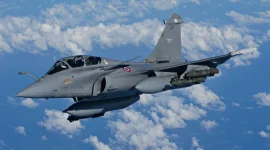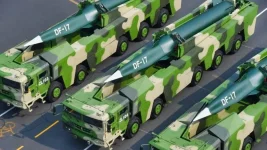- Views: 3K
- Replies: 16
As India's defence sector pushes towards modernization and self-reliance, the potential role of private companies in manufacturing military aircraft, particularly fighter jets, has become a subject of intense debate.
A key question looms: if the private sector is entrusted with producing fighter jets, will the Indian Air Force (IAF) be willing to pay a premium for these indigenously assembled aircraft?
Defence analysts have raised concerns about the potential cost implications of such an approach. While the idea of fostering domestic production of fighter jets under the "Make in India" initiative is appealing, the IAF may face challenges in accepting aircraft from private manufacturers at premium prices.
One analyst cautioned, "We want to follow the US model and create Lockheed Martin and Boeing of our own military aerospace majors. But to achieve this, we would need to buy their aircraft at prices that will be controlled by them, and also be ready to fund them as they demand."
This perspective highlights the complexities of achieving self-reliance in defence production. While the "Make in India" program has ambitious goals, there are concerns about the costs associated with establishing local manufacturing infrastructure and sustaining long-term partnerships with private players.
Analysts point to the ongoing C-295 aircraft project, undertaken by Tata Group in collaboration with Airbus, as a case in point. This project, a significant milestone in India's defence manufacturing efforts, aims to produce medium transport aircraft domestically.
However, analysts question the value proposition of private sector involvement in larger-scale military projects, such as fighter jets, and whether the industry can mature quickly enough to handle such complex undertakings.
Concerns have been raised about the premium India is paying not just for the local infrastructure but also to cover the profit margins of private entities like Tata Group.
"In the name of Make in India, we are paying an extra premium for the infrastructure costs required to set up these facilities. There's also an additional margin that has to be paid to the Tata Group," one analyst explained.
Furthermore, analysts question the long-term sustainability of such an approach. They raise concerns about whether companies like Tata, after fulfilling the current order of C-295s, will be able to independently develop and produce medium transport aircraft without foreign collaboration.
This reflects a broader concern about the capability of private sector companies to transition from assembling foreign designs to developing entirely new and technologically advanced platforms that meet the stringent requirements of the Indian Armed Forces.
The true test will be how the private sector responds to these challenges. The success of initiatives like the C-295 program could provide valuable lessons for future projects, but much will depend on whether the sector can scale, innovate, and maintain the quality and cost-effectiveness demanded by the IAF.



